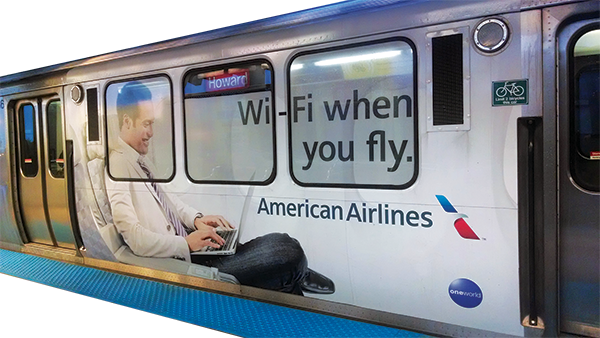The ad, showing a cross-section view of an airplane’s interior, is posted across the outside of a train car on the Chicago “L,” so the traveler in the picture is positioned as though he were riding the train, relaxing in his seat. If he were to look out his window from this elevation, he would see the city go by in the distance. People waiting on the platform see a man flying on the train, but he doesn’t seem to fit. Yes, if he were real, he would be a giant, but it’s not just that: he stands out because he looks like a traveler from the not-so-distant twenty-first century, smiling as he types on an Internet-connected MacBook Air, not inconvenienced by the need to move. The overlap of the two modes of transportation suggests what is already implied by the elevated tracks that give the Chicago “L” its name: the train is a kind of flight. This is what travel can be now, and the grounded commuters waiting for the “L” begin to see a loftier possibility. The ad’s copy, “Wi-Fi when you fly,” expects this from them. It is not the hypothetical—not If you fly. It is the future in terms of the present, the idealization of air travel impressing itself on train travel, the celestial tangling with the terrestrial, the message becoming the medium.





